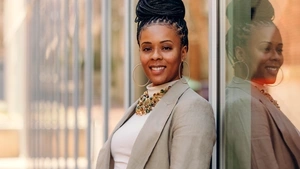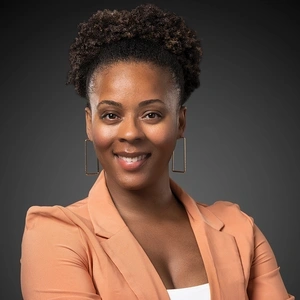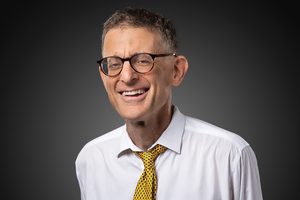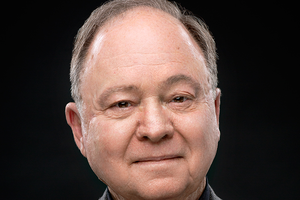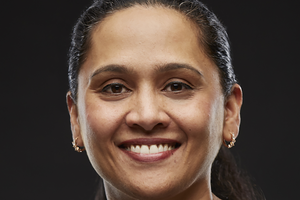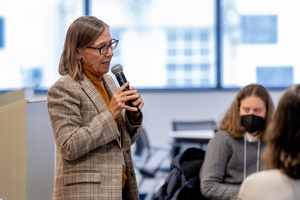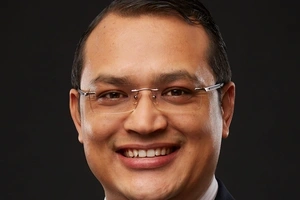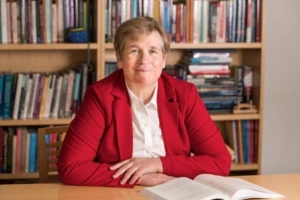Faculty Expert
If you want to explain today’s problems, Ericka Weathers recommends looking to the past: “History helps us make sense of findings and frame questions.”
Weathers, an assistant professor in Penn GSE’s Policy, Organizations, Leadership and Systems Division , studies how policies that are supposed to be race-neutral, like school funding formulas, truancy policy or special education, end up failing marginalized groups. She hopes that, armed with a better understanding of the results of past policies, our current decisions can lead to a better future for everyone.
Local tax revenues support most public schools, meaning poorer districts often need more funding to support students' needs. The more a school can invest in its students, the better the outcome. State and federal funds are supposed to even the playing field by filling in funding gaps for poorer schools, regardless of the racial makeup of the students. But that is not what happens. Weathers’ research shows, for example, that the more racially segregated a school district is, the more likely it is to deviate from expected investments. School districts that are majority Black and LatinX receive less money per student than districts where white students make up the majority.
Using U.S. Department of Education data, Weathers tracked school revenues and the racial makeup of different school districts. In a 2021 study, she and her Stanford colleague Victoria Sosina showed that for 15 years starting in 1999, districts that became Blacker and more LatinX received less funding per student than income-matched majority white schools. She is now studying what might have caused those disparities, including possibly school funding formulas.
“Even after we control for a number of characteristics that are thought to be associated with school funding formulas, like poverty, we still find this relationship.”
She thinks that policies designed to address historic racial inequities can help. Congress cited her research to justify provisions for racial equity in the "Strength in Diversity Act" now working its way through Capitol Hill.
Another big problem impacting communities of color is the school-to-prison pipeline. "There's a lot of research that shows a relationship between exclusionary discipline — suspensions and expulsions — and the school-to-prison pipeline," Weathers says. Building on that, she is studying truancy (unexcused absence) policy. "Truancy policies are often punitive and criminalize student behavior in much the same way as discipline policies."
The first problem with studying truancy is the need for more transparency. Weathers is pushing to make data more publicly available or available by request for researchers. "A lot of places want a solution for inequality. But we'd argue that we don't even know enough about truancy policy and how it's generating or related to inequality."
In some districts, parents can be fined if their children miss too much school. This is worrying, according to Weathers, because some problems with truancy are problems of poverty, including lack of transportation, food or safety. Fining the parents will only exacerbate the problem. In her research, Weathers is classifying school truancy policies from highly punitive to highly restorative. Even with that classification system, it is hard to know how policies are enforced because most districts have discretion in how they mete out punishments. She hopes to find or create a data set that allows her to correlate student outcomes with punitive or restorative approaches to prolonged absences from school.
Weathers' approach has many other applications. She is working with a school district in California, trying to remove racial biases in special education. There are four decision points: referral, assessment, eligibility and placement. If Black and LatinX students are over-represented at one decision point and less so at others, the school district will know where to focus interventions on enhancing racial equity.
Weathers earned her Ph.D. from Stanford University. She is on the editorial board of Educational Evaluation and Policy Analysis. She believes that the numbers tell part of the story. "My research looks at the causes and consequences of inequality in education. I want my work to be used to challenge our ways of thinking about policies, to think about how policies can have a racially disparate impact, and what can we do to avoid educational harm."
Media Inquiries
Penn GSE Communications is here to help reporters connect with the education experts they need.
